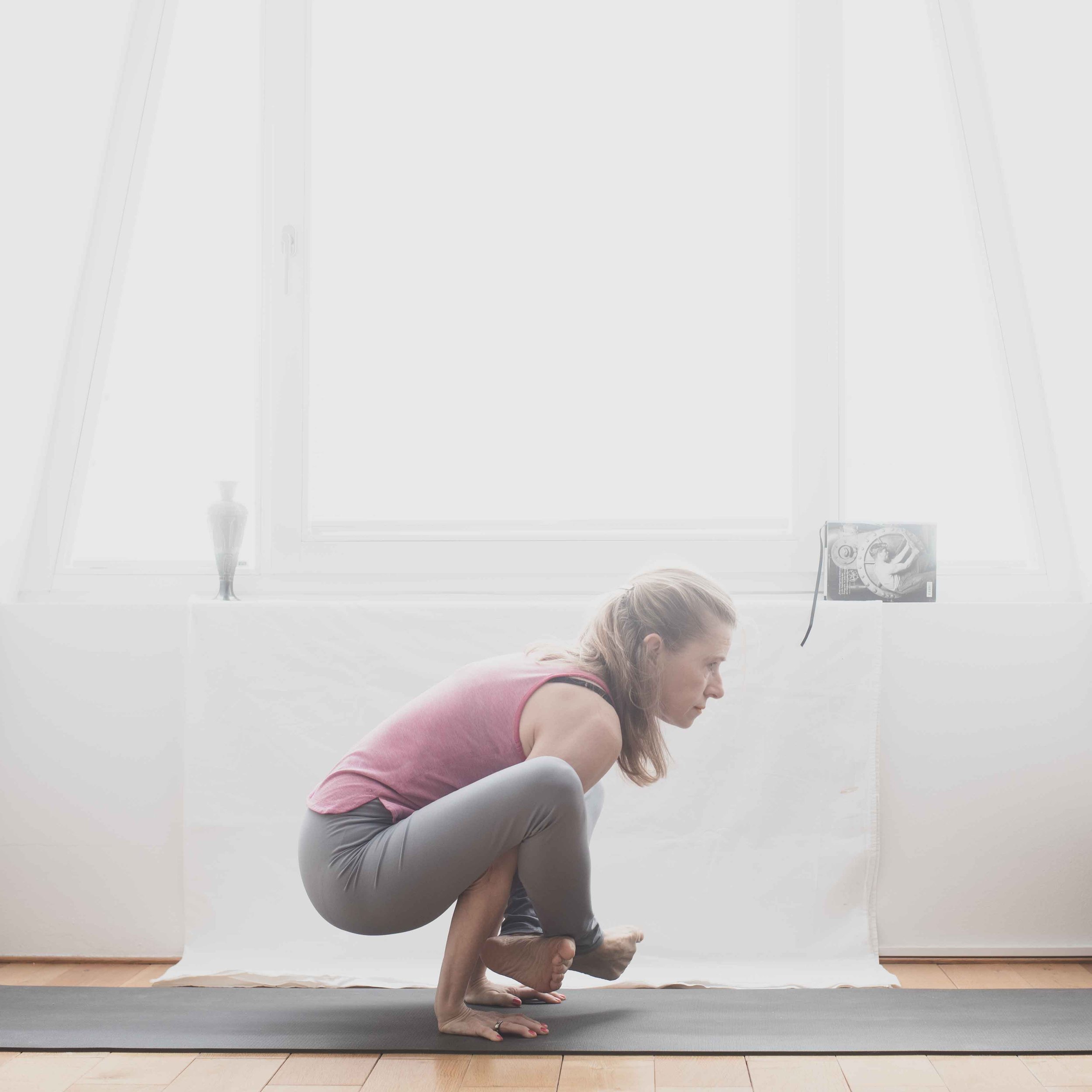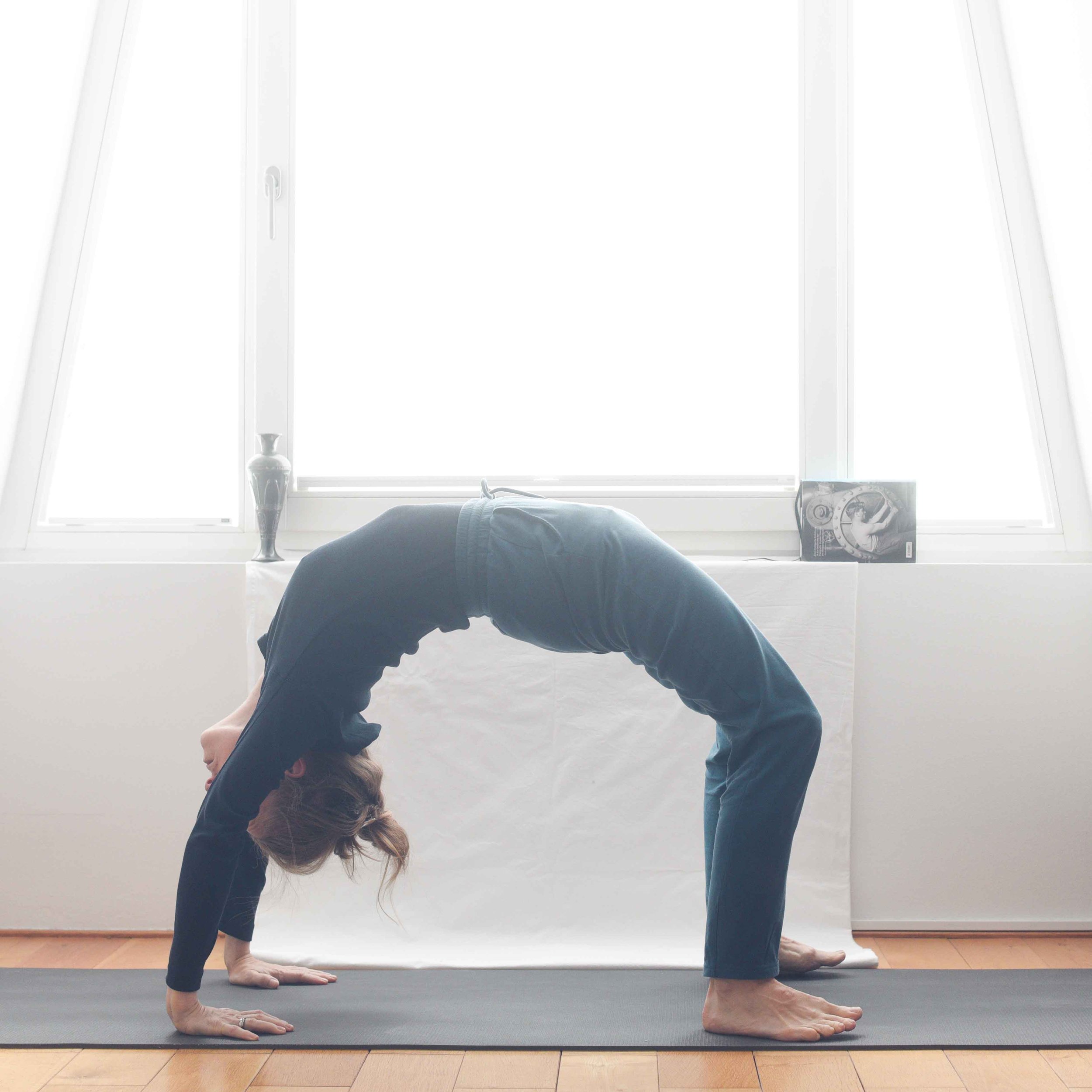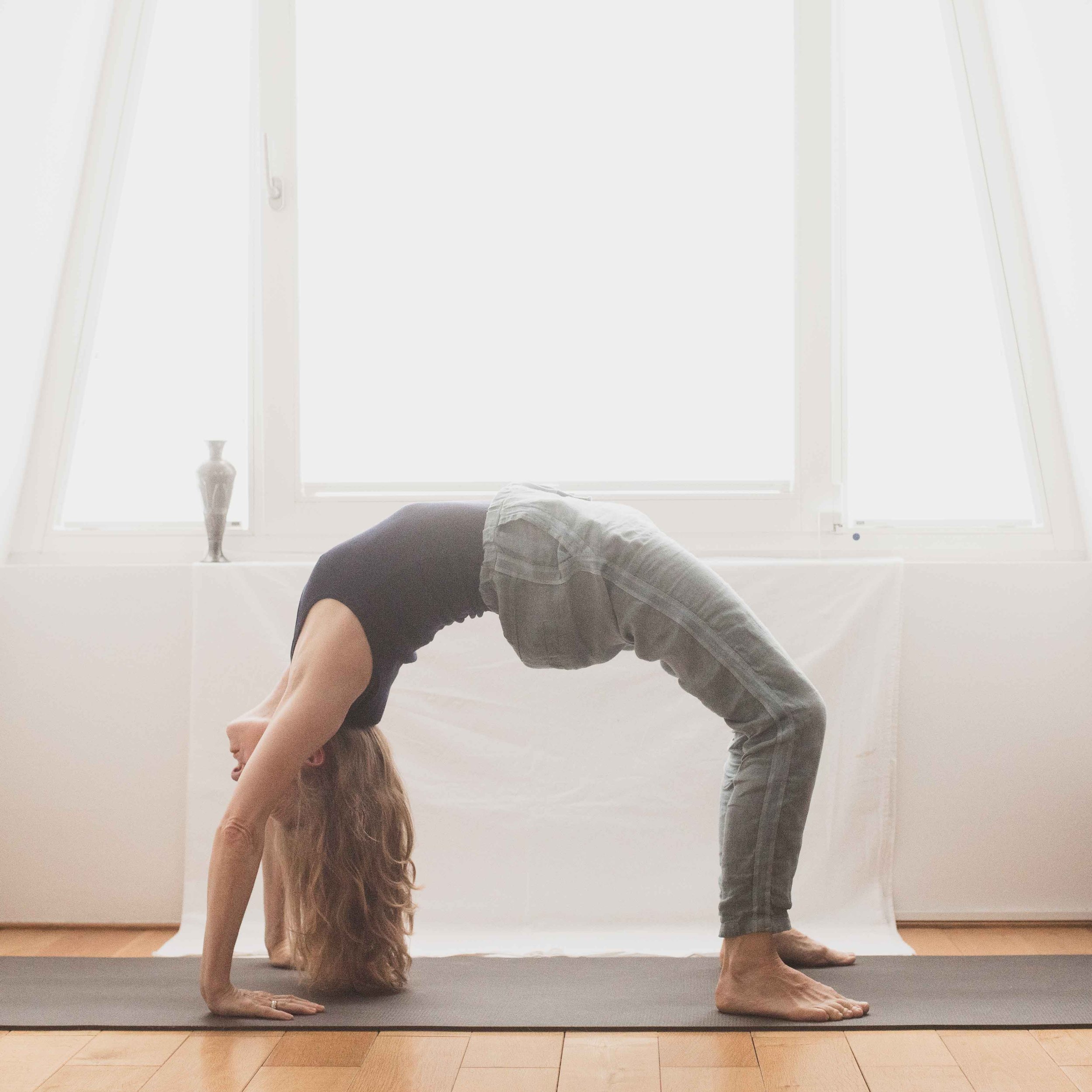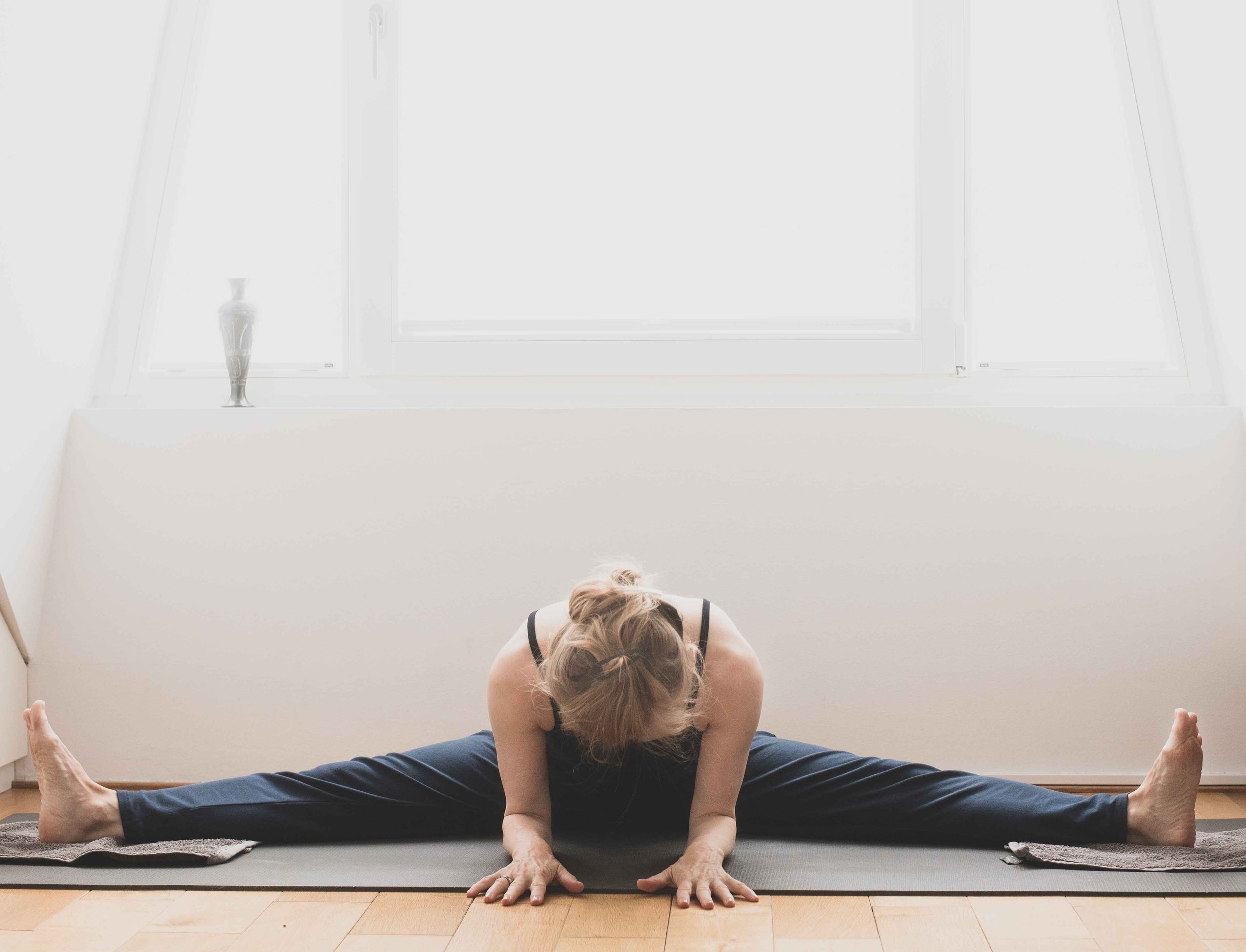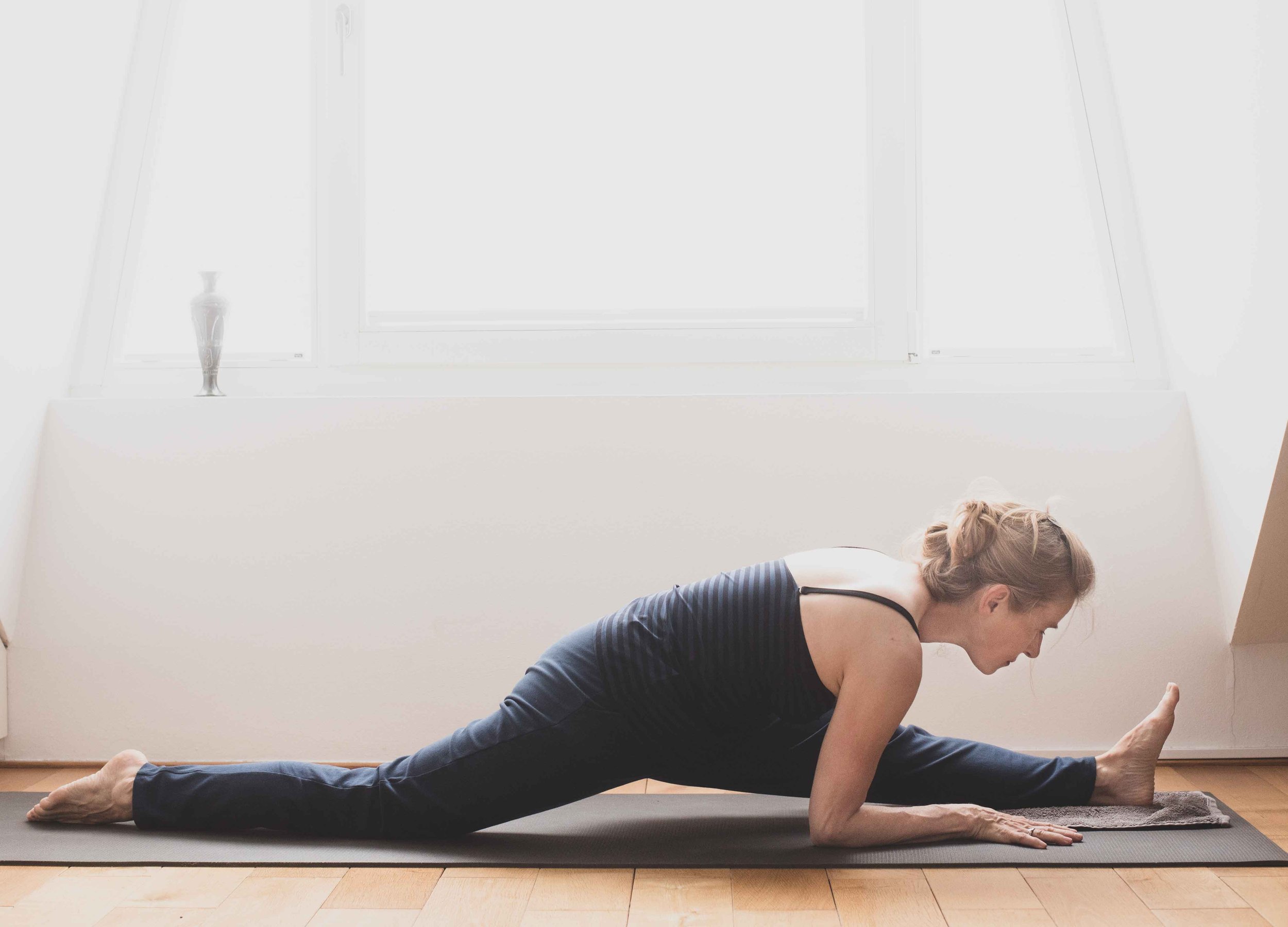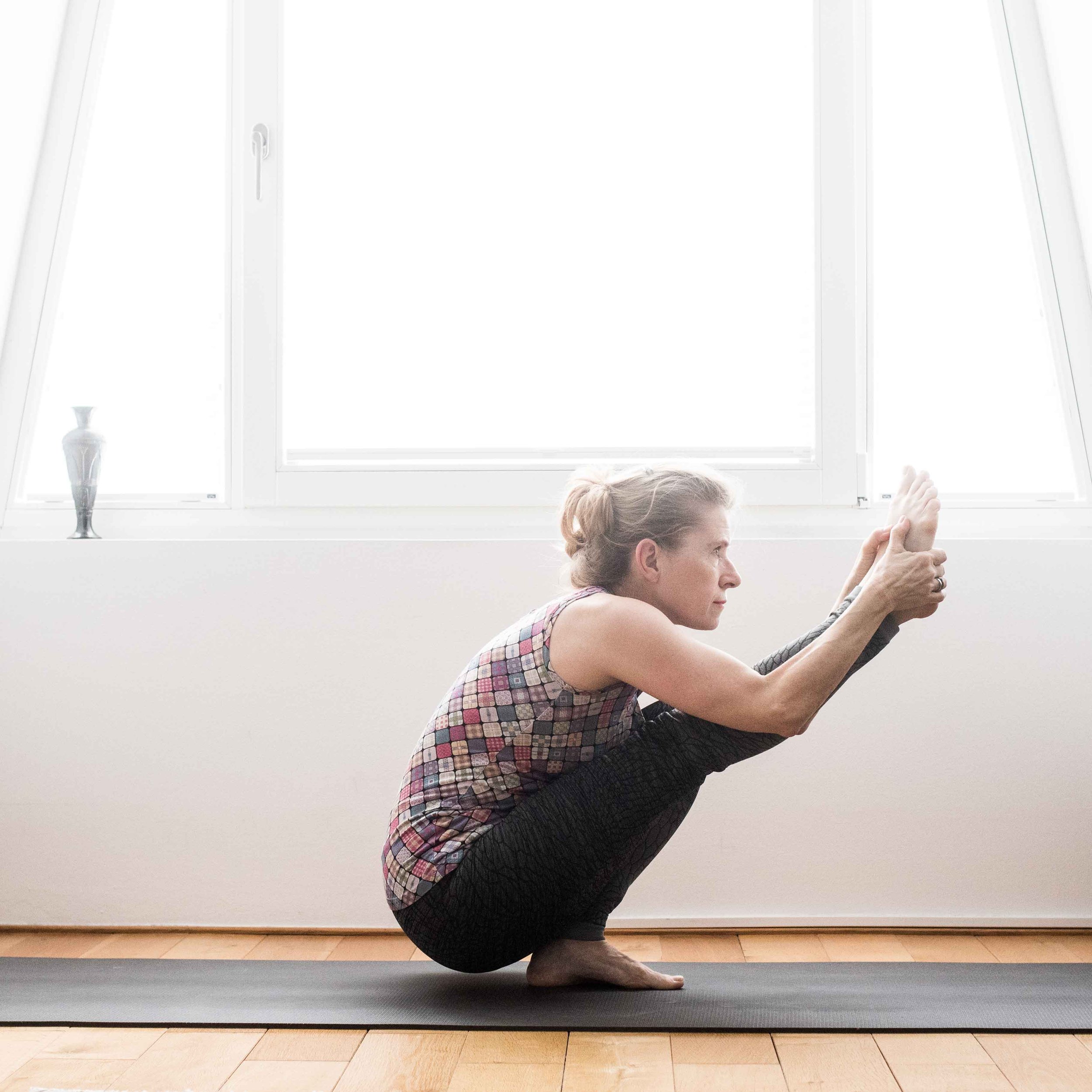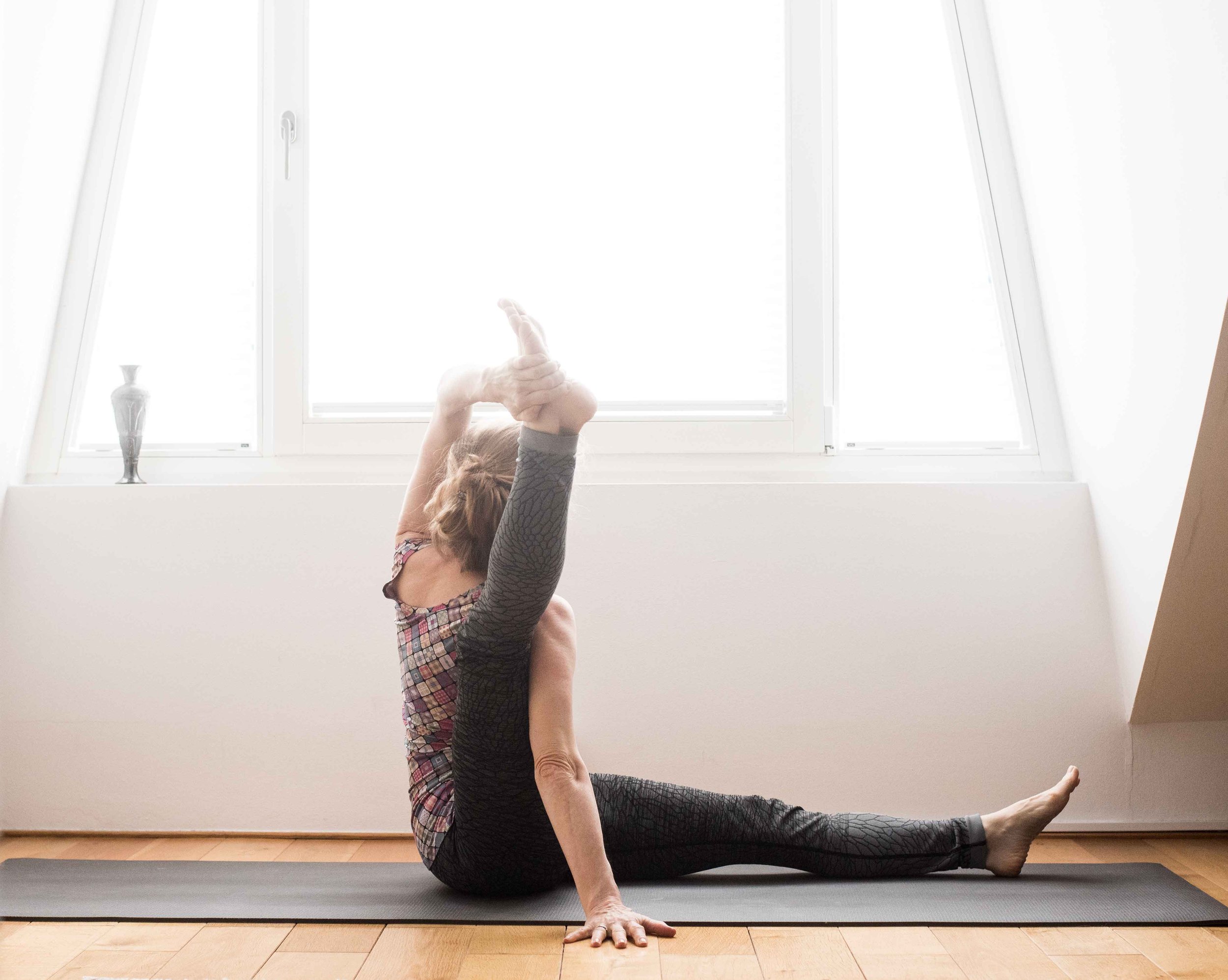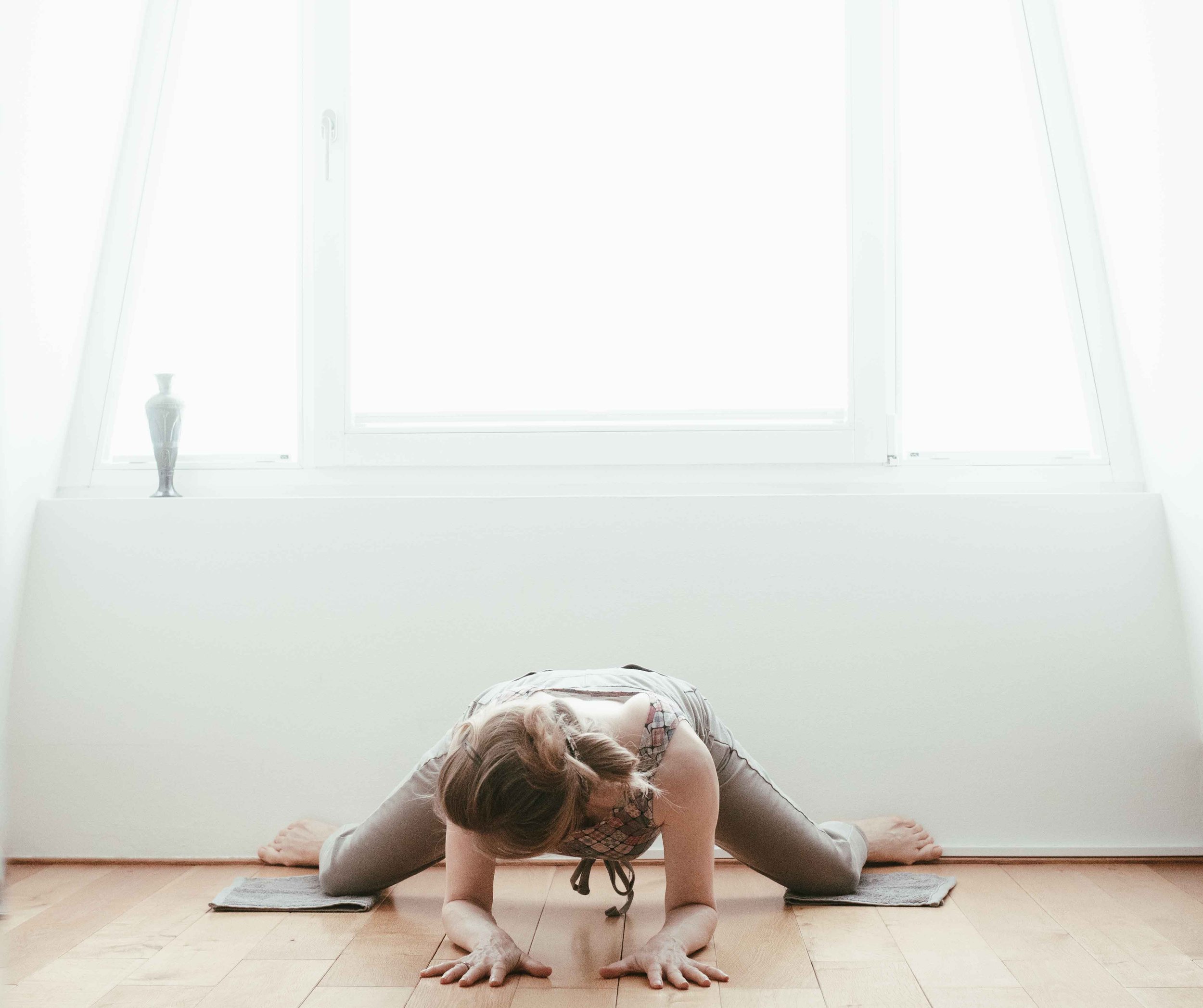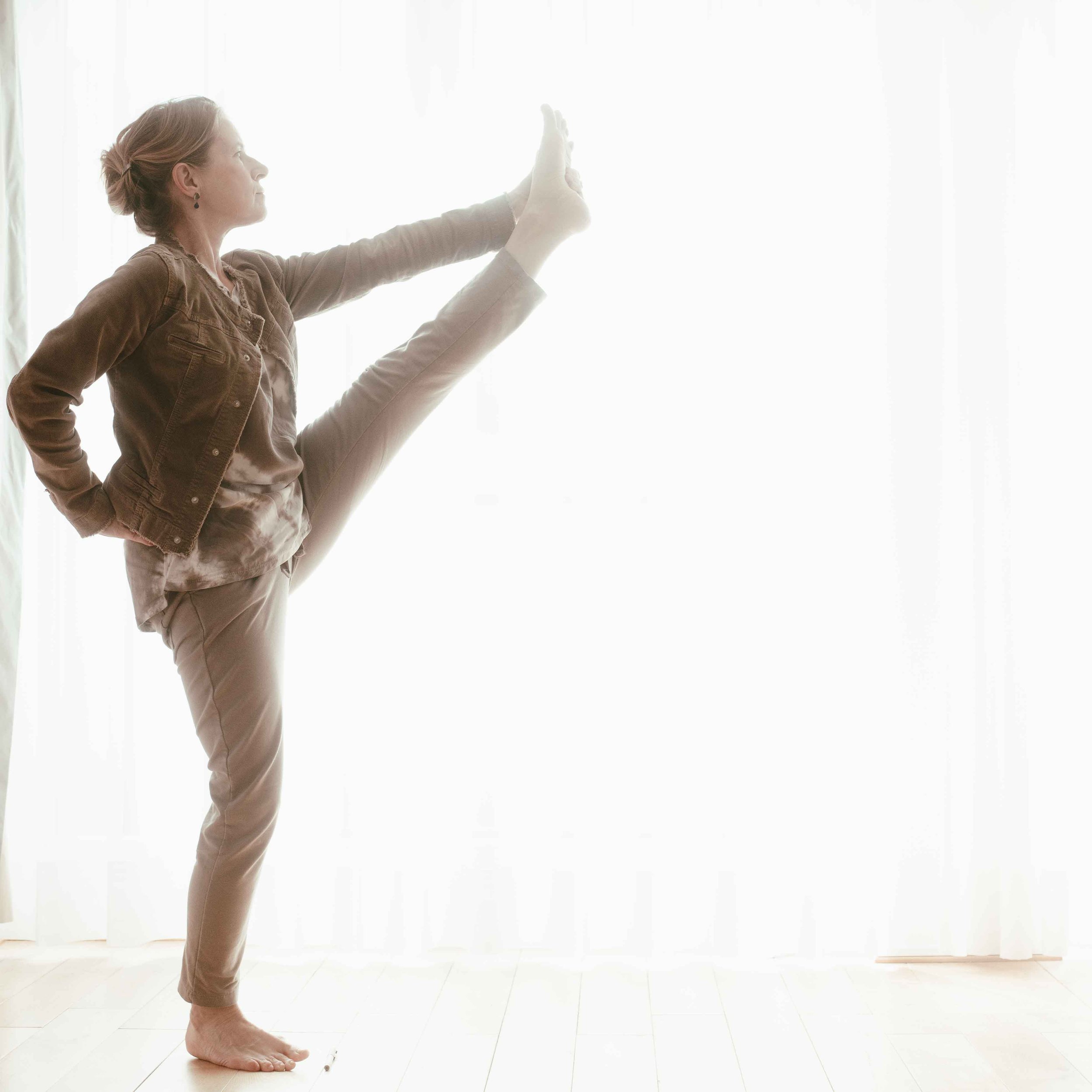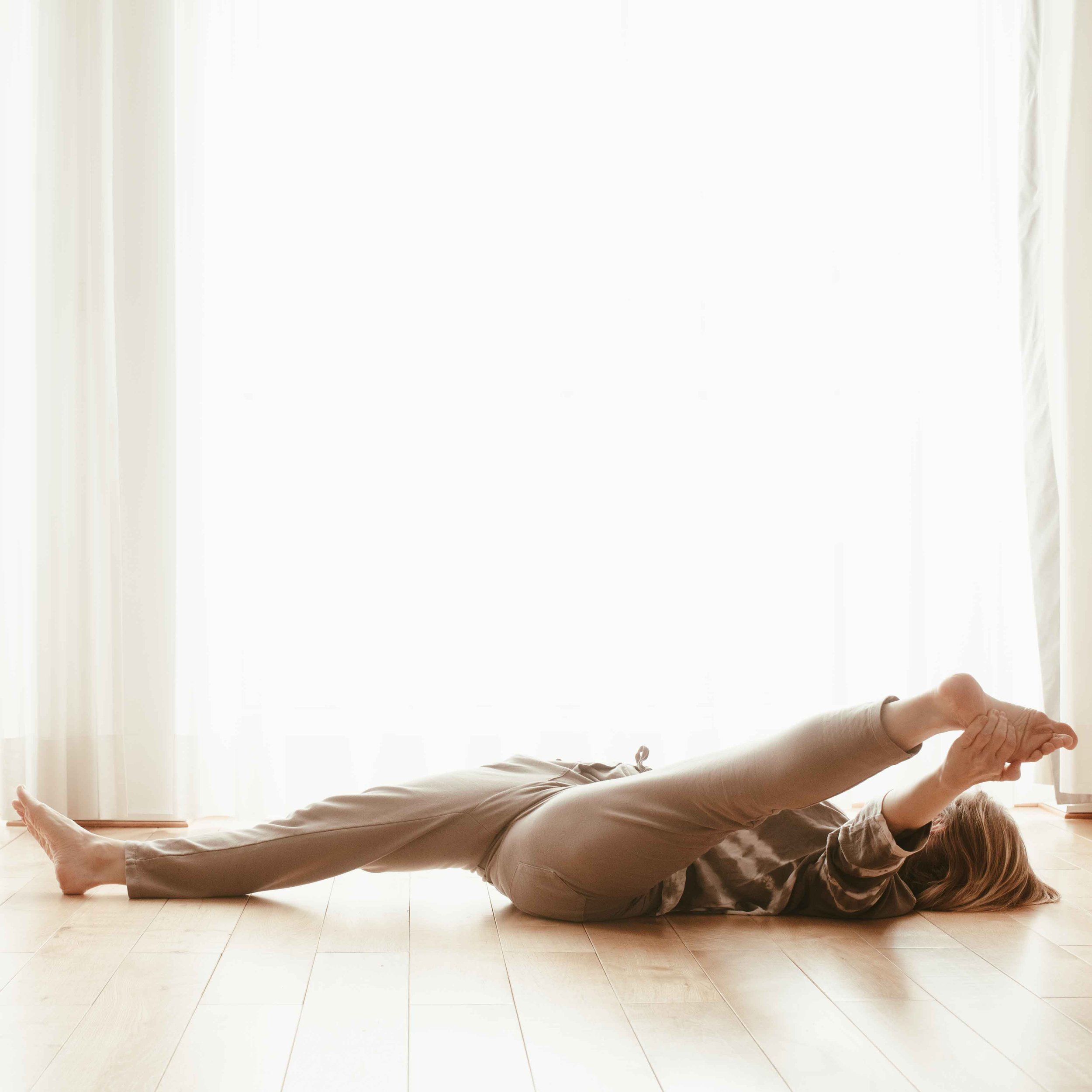Thinking about asanas
Reflecting on asanas means deepening your understanding of the postures.
No asana stands alone and isolated.
First of all, there are always different ways to move into an asana (vinyasa). Some transitions are easy, some are difficult. Some approaches to an asana are so difficult that the asana is not possible. I'm thinking of the bridge. Pushing into the pose from the floor is much easier than going into it from a standing position.
There are variations for every pose. It has become increasingly important for me to know easier and more difficult variations. Sometimes, when nothing works, I practise the easier variations. On ambitious days, I try more difficult variations.
It makes sense to know a counter position for every position. You can also be creative here. I often find paschimottanasana after urdhva dhanurasana too intense. The back hurts. However, if I perform lighter counter movements beforehand, paschimottanasana also becomes possible. An easier counter pose for me after intense backbends is to lie on my back and bring my knees towards my chest. Light circles massage the lower back. The pose is very relaxing.
Switching from intensive backbends to intensive forward bends is challenging. You can make the transitions smoother.
It makes sense to analyze a pose. Is it a backbend, a forward bend, a twist, a balance pose or an inversion pose? Maybe it's a combination? Where do you stretch? Where is strength needed? Once you know this, you can do specific exercises.
For backbends, you can stretch the shoulders in isolation, then the hip flexors. By repeatedly pushing yourself into the bridge, for example, you strengthen your arms.
Thinking about asanas expands the possibilities. It becomes easier to come up with your own sequences. This is especially important if you want to learn new poses.
Practicing variations sharpens your mindfulness.
It allows you to adapt the practice to your own needs and abilities.
Individualizing your yoga practice is only possible at home. In yoga classes, you have to engage with the teacher. Even in Ashtanga, in Mysore classes where everyone practises for themselves, sequences and asanas must be strictly adhered to. I always ask myself why yoga teachers are not more flexible? Aren't the asana exercises about flexibility?
